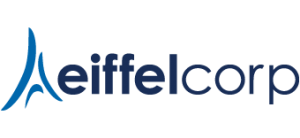Johannesburg
+27 (0) 11 234 4000

In today’s world we live, work and learn with a number of different generational cohorts. Technology is one of the biggest reasons why the generation gap is ever increasing. Our learners have changed radically. Today’s learners are no longer the people our educational system was designed to teach.
GI Generation 1925 – 1945
Baby Boomers, 1946-1964
Generation X, 1965-1979
Generation Y (Millennials or Net Generation), 1980-1994
Generation Z (iGen, Post-Millennials, Centennials, or Plurals))1995- present
We have generation of 21st Century learners who do not know a world without technology being taught by a generation of people who grew up in a world where technology did not run their lives.
One of the biggest problems facing education today is that our digital immigrant instructors, who speak an outdated language (that of the pre-digital age), are struggling to teach a population that speaks an entirely new language.
Baby Boomers as well as Generation X’s are digital immigrants, they have learnt to use technology however they use these tools as productivity tools rather than connectivity.
The people that do use technology as a connectivity are digital natives (Generation Y and even more so generation Z) have spent their entire lives surrounded by and using computers, videogames, digital music players, video cams, cell phones, and all the other toys and tools of the digital age. Computer games, email, the internet, cell phones and instant messaging are integral parts of their lives.
The importance of the distinction is this: As digital immigrants learn – like all immigrants, some better than others – to adapt to their environment, they always retain, to some degree, their ‘accent’.
Today’s older generations were ‘socialised’ differently from their kids, and are now in the process of learning a new language. And a language learned later in life, scientists tell us, goes into a different part of the brain.
There are hundreds of examples of the digital immigrant accent. These include printing out your email (or having your secretary print it out for you – an even ‘thicker’ accent); needing to print out a document written on the computer in order to edit it (rather than just editing on the screen); and bringing people physically into your office to see an interesting web site (rather than just sending them the URL).
Digital immigrant educators assume that learners are the same as they have always been, and that the same methods that worked for the teachers when they were learners will work for their learners now. But that assumption is no longer valid. Is it that digital natives can’t pay attention, or that they choose not to? Often from the natives’ point of view their digital immigrant instructors make their education not worth paying attention to compared to everything else they experience – and then they blame them for not paying attention!
Technology!
I am sure you are thinking that I just told you that technology is one of the main reasons why there is such a huge gap between generations because of technology so how could the problem be the solution?
Let’s break it down:
What is our solution?

Grovo has developed a microlearning method that blends bite-sized content, activities, and assessments together in a unique experience that’s perfectly suited to the 21st century world of work this is called microlearning
Microlearning brings short burst of content that brings information painlessly to learners of all strengths and abilities and meets the needs of both ends of the generation gap.
Grovo gives todays school leader’s (digital immigrants) strategic bursts of learning that are relevant to each leader’s current challenges. Offsite training scheduled weeks from a busy school situation doesn’t do much good. Microlearning helps leaders lead better now.
In order for any training to truly change a senior leader’s behaviour, it must be contextually appropriate. That’s where the granularity of microlearning becomes so powerful. Bite-sized content can be endlessly mixed, matched, and repurposed around the unique needs of each individual. No two leaders are exactly alike, and with a microlearning approach you can accommodate them all.
Digital natives have elevated distraction into an art form. They expect information to arrive not in big bundles, but in a torrent of small morsels. Microlearning works the same way. It takes only a tiny bit of the learner’s time and helps them apply the lesson in real time, before they have a chance to forget it.
Microlearning meets the modern learner’s desire for searchable, habitually pulled information. Imagine if the content assigned by their educator felt as natural as looking something up on Google. Microlearning makes this happen.
Digital natives expect technology to anticipate their tendencies and desires before they even begin using it; it’s why app personalization technology has grown 332% from 2014–2015. Microlearning makes learning more personalised it makes available the exact piece of information your learners need, the moment they need it.
Small steps, big wins. Give us an opportunity to show you how Grovo can work for you. Call us on 021 782 2993 or 011 234 4000 or email marketing@eiffelcorp.co.za
http://blog.grovo.com/why-savvy-trainers-will-start-using-microlearning-to-develop-senior-leaders/
+27 (0) 11 234 4000
+27 (0) 21 782 2993

 TRAIN MANAGERS AND LEADERS AT YOUR ORGANIZATION TO BE INCLUSIVE WITH THE LATEST...
TRAIN MANAGERS AND LEADERS AT YOUR ORGANIZATION TO BE INCLUSIVE WITH THE LATEST...